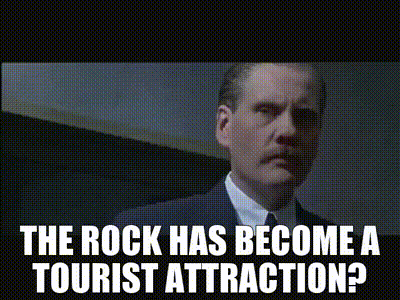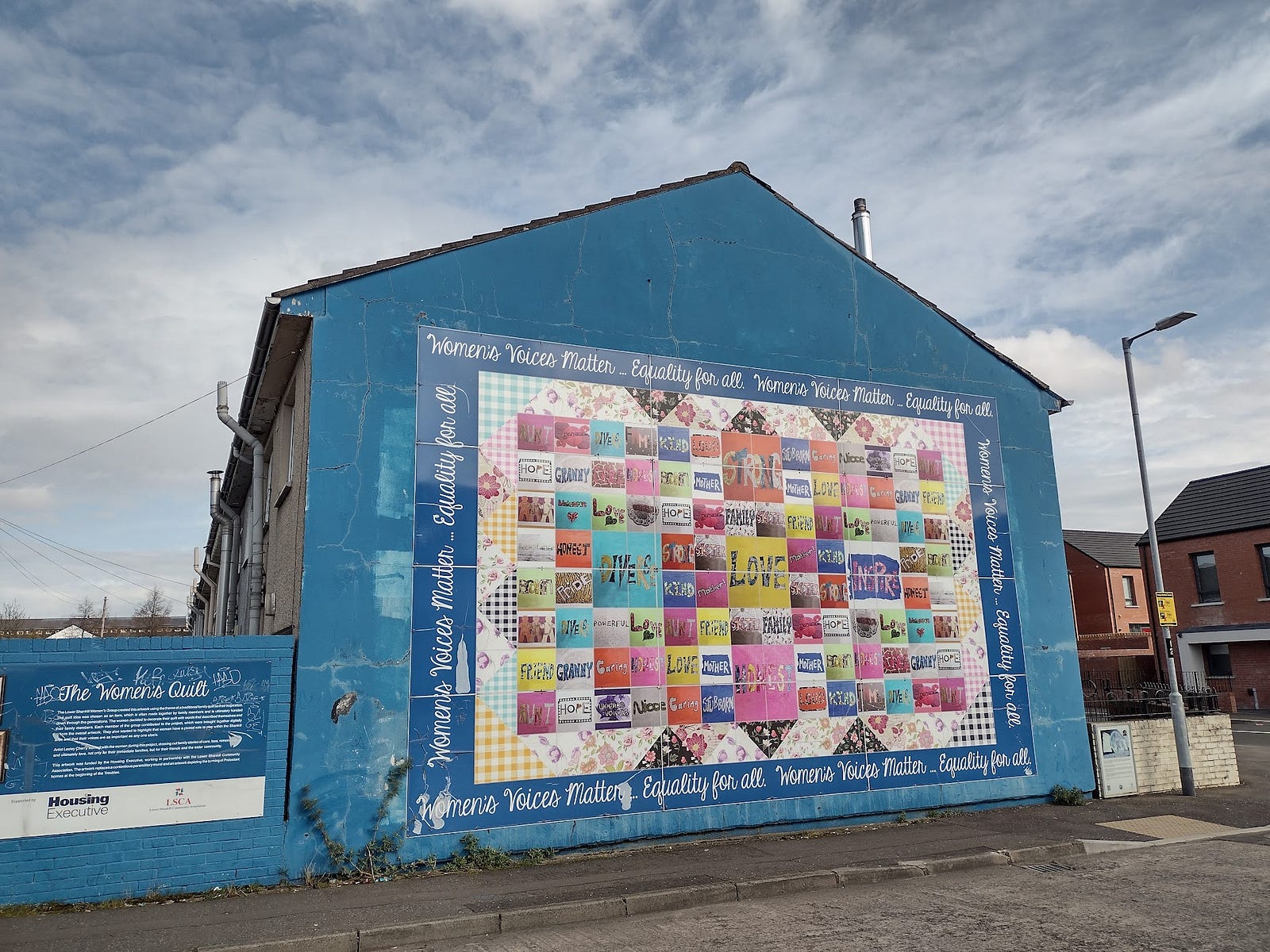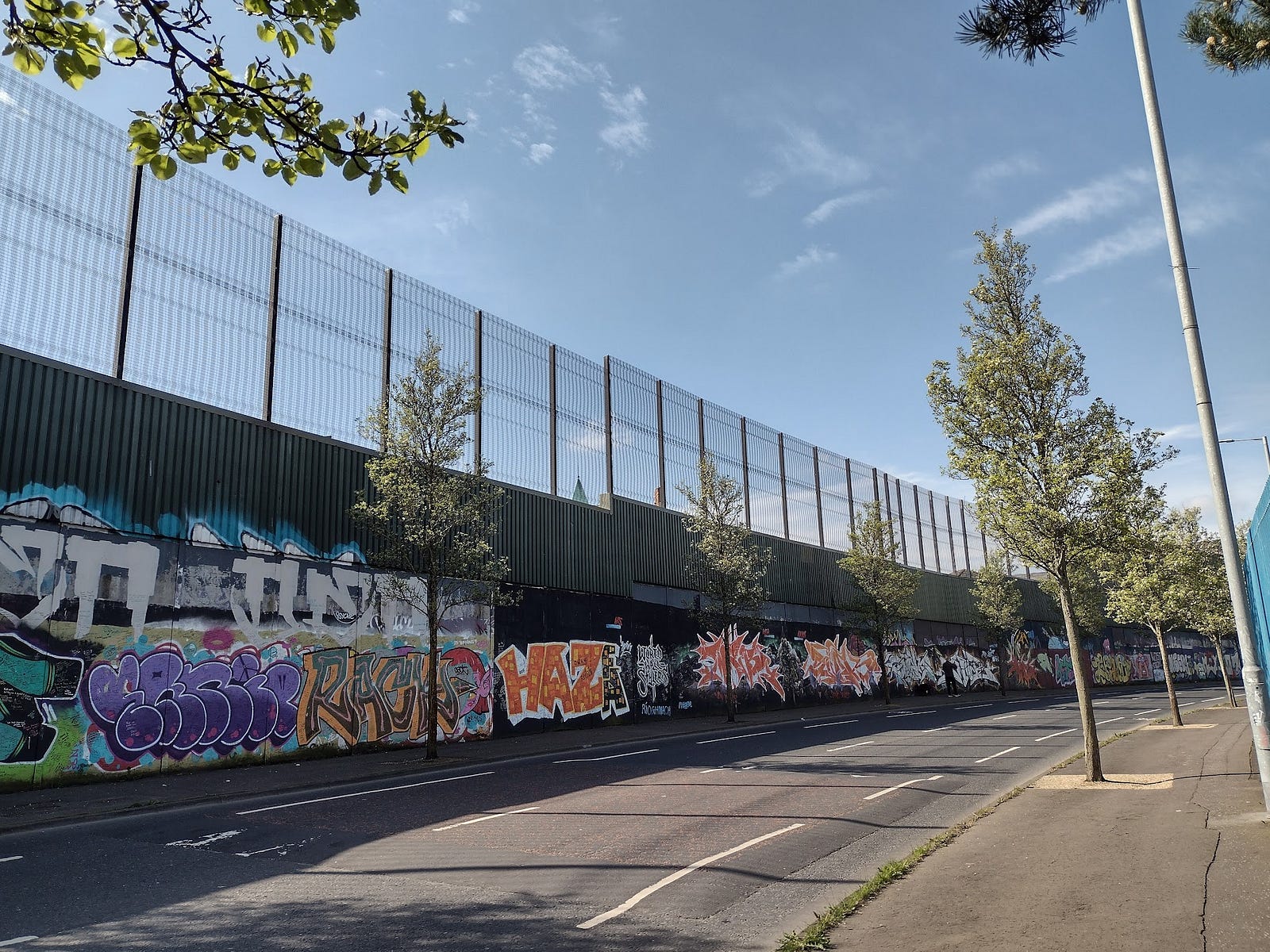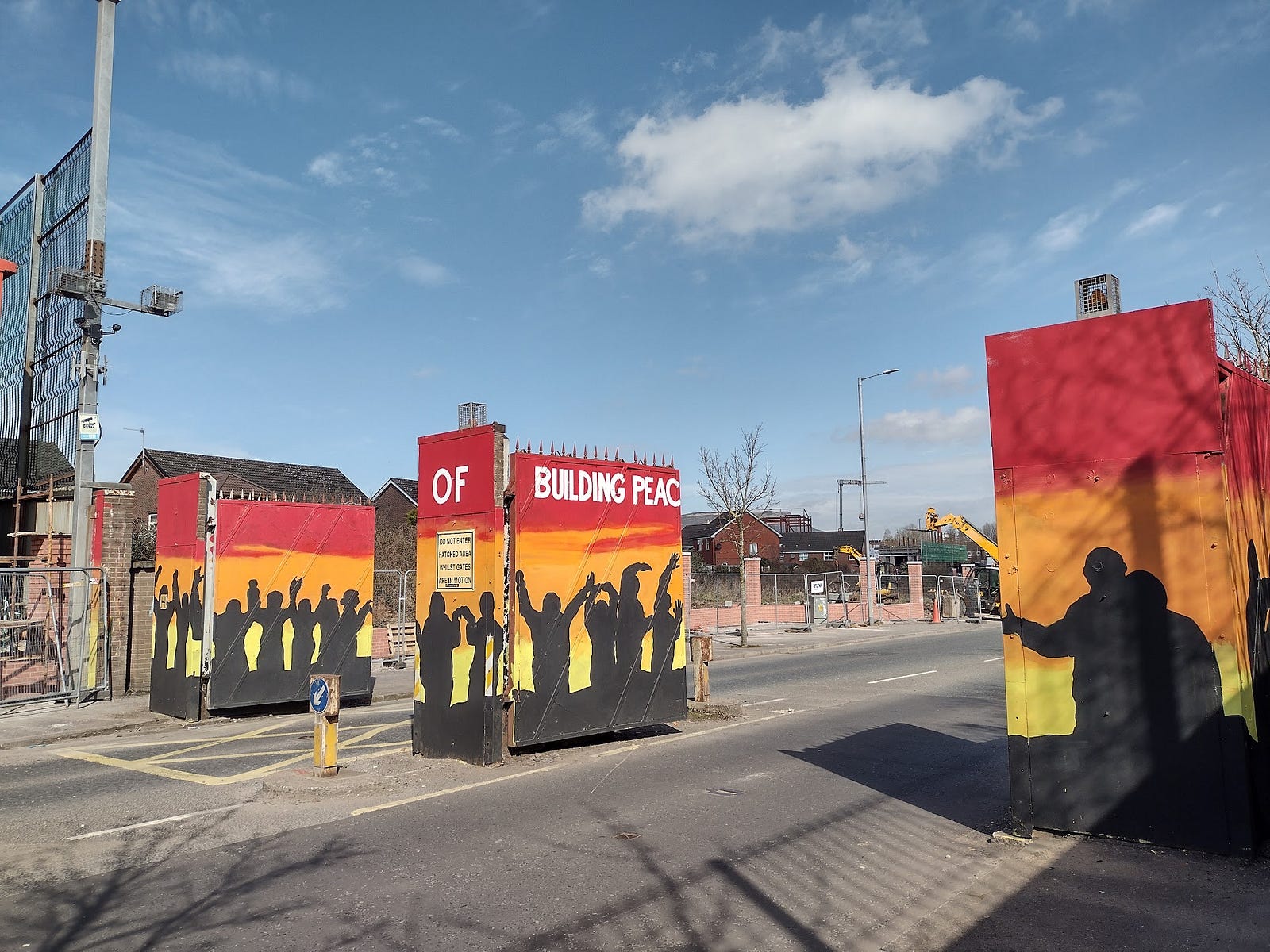ND Food & Travel Posts
RSS FeedBelfast
Last summer I was lucky to visit Nicosia, a city divided between two groups (Greek Cypriot and Turkish Cypriot) now functioning as two separate countries. I started out this Europe trip with a new addition to the international relations map nerd experiences: Belfast, Northern Ireland.
As a 90s kid, I had next to zero awareness of Irish politics.
For a present-day visitor, the most recent and relevant points are:
- Most of Ulster, the northeast region of the island of Ireland, is a part of the United Kingdom. Today Northern Ireland has 1.9 million residents.
- In 1969–1998 there was an outbreak of violence between Unionists/Loyalists/Protestants who support the status quo and Republicans/Catholics who would have Northern Ireland join the Republic of Ireland (in other words, a Republican wants a unified Ireland, but don't get it confused).
The Good Friday Agreement (25th anniversary this week) put shared power in a local Parliament, lightened borders with Republic of Ireland, and set conditions for a future referendum. - Brexit created a difficult situation where the UK must have a hard border with the EU, but no one wants to upend the agreement in Ireland. The UK had to put more controls between Northern Ireland and the rest of Great Britain - not a great outcome.
- On a lighter note, the official @AmazonHelp account once blundered into saying that a Northern Ireland customer could not view a UK broadcast. Many memes were exchanged.
Visiting the Gaol/Jail and Titanic Museums
The Crumlin Road Gaol (supposedly "Europe's Alcatraz") closed in 1996 and reopened as a museum in 2012. It's open to conferences, weddings, and other events.


Back in the US, the National Parks Service is not as flexible:
No weddings are permitted on Alcatraz. Private events on Alcatraz must be conducted in areas that are historically appropriate
Tweets indicate that a few people have witnessed proposals at Alcatraz. There's also a "modern garden wedding" post, but on closer examination it might be limited to an edgy photo shoot (the photographer's website describes this as "editorial").
https://www.oncewed.com/featured/modern-garden-wedding-alcatraz-island/
For deeper reporting on prison tourism see https://www.themarshallproject.org/2022/06/09/rethinking-prison-tourism
Anyway - this museum and the Titanic Museum opened around the same time, and both leaned into immersion via life-size video/hologram characters talking to you like a passenger/prisoner.
An animated video on The Troubles attempts to cover the whole relationship between Great Britain and Ireland. I wonder if they found someone online with a good history channel and commissioned them to make this video?
Some points from the Titanic museum:
- They refused to include anything taken from the wreck, so they have some items which passengers saved, and contemporary / replica stuff, but generally info text, hologram actors, and life-size dioramas.
I would recommend it for kids who know nothing about the Titanic but are old enough to handle the tragic parts, and adults who picture themselves as a first-class passenger on the Titanic. - Walking aboard the SS Nomadic was cool.
- The museum keeps up-to-date. I was surprised by a panel about Dr. Robert Ballard being dyslexic. It appears that he recognized this recently with his daughter's help; he mentioned it in a CBC interview in 2015, then it was reported more widely with his 2021 autobiography.
Walls up
Back in 2013, there was a commitment to remove 'peace walls' which were built between Catholic and Protestant neighborhoods (one video made a point of emphasizing working-class neighborhoods). The walls have stayed up, but peace orgs continue working on lowering walls, replacing concrete with fencing, restorative justice and factfinding/inquiries, and art projects.
The most recent wall was built at a school in 2008. In a 2018 interview, the principal said:
Our P7s read The Boy in the Striped Pyjamas which is a very, very powerful children's book. For the last little bit of it they actually go out and stand by the fence to have the last chapter read to them.
Note: this book is used widely in the UK to teach the Holocaust. The Centre for Holocaust Education has studied how damaging and ahistorical it is, and in 2020 the Auschwitz Museum warned it "should be avoided."
The school is part of such an incomprehensible situation so I understand an impulse to make sense of it by drawing comparisons, but it's a bit off? I mean, the wall raises questions about community and humanity, but a person can walk up to it and around. For example:
I Walked Around The Wall
The most famous Peace Wall within Belfast is between Bombay Street and Cupar Way. You'll see black cab tours stopping here and at large murals such as one for Bobby Sands.
I walked south from the jail to Shankill Road (peak loyalist area). Every other building has a mural or memorial with UK and Ulster flags (note several are for WW1, not just the Troubles). There are community meeting halls, museums, and somehow a Subway. I'll show this mural since it's one which replaced a paramilitary image.

Then I travel south to the wall. I pass a line of houses reminding me of Privet Drive. You can hear kids playing in a backyard while walking up to this imposing wall.

I turn right. Looking back north, this neighborhood has their own blue fence, empty lots, and bollards. Cupar Way is a No Man's Land.

At Lanark Way I turn left toward the Catholic neighborhood. These gates are reportedly closed every night. Opposing crowds threw bottles over it in 2021. From StreetView, my understanding is these get repainted frequently.

I walked through, down Springfield Road, then back toward town. There are Irish flags and an Irish language sign for a Dochtúir. In a short walk, I saw a mailbox sticker-tagged for a socialist republic, a sign calling for a Citizens' Assembly on Irish Unity, flyers for an Easter Commemoration.
With both neighborhoods being the same city and national government, I was hopeful that I would leave Belfast with optimism for the future. But the visceral history, fresh memory, and tons of community meetings going in different directions, left me thinking it will be divided for several more years.